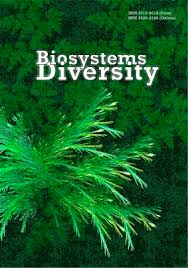Physiological responses of orchids to prolonged clinorotation
Physiological responses of orchids to prolonged clinorotation
Author(s): N. V. Zaimenko, B. O. Ivanytska, N. V. Rositska, N. P. Didyk, D. Liu, M. Pyzyk, J. SlaskSubject(s): Agriculture, Health and medicine and law
Published by: Дніпропетровський національний університет імені Олеся Гончара
Keywords: Cypripedium flavum; Angraecum eburneum; Epidendrum radicans; clinorotation; adaptive reactions;
Summary/Abstract: Creation of plant-based bioregenerative life support systems is crucial for future long-duration space exploring missions. Microgravity is one of the major stresses affecting plant growth and development under space flight conditions. Search for higher plant genotypes resilient to microgravity as well as revealing of biological features which could be used as markers of such resilience is rather urgently needed. The objective of this study was to analyze physiological and biochemical responses of three orchid species representing different life forms (terrestrial and epiphytic), growth types (monopodial and sympodial) and pathways of CO2 fixation to long-term (24 months) clinorotation which modeled the combined effect of two stress factors: hermetic conditions and microgravity. Three years old meristematic orchids Cypripedium flavum, Angraecum eburneum, Epidendrum radicans, representing different life forms, types of branching shoot system and pathways of CO2 fixation, were used as test-plants. The microgravity was simulated using three-dimensional (3-D) clinostat equipped with two rotation axes placed at right angles (rotation frequency was 3 rpm) in controlled conditions of air temperature, illumination, air humidity and substrate moisture. The control plants were grown in the similar plastic vessels but not hermetically sealed and without clinorotating in the same environmental conditions. The vital state of the test plants was assessed using characteristics of mineral nutrition, content of photosynthetic pigments, free amino acids, soluble proteins, DNA and RNA, enzymatic and non-enzymatic antioxidants. The results of this study confirmed that orchids grown under simulated microgravity and kept in hermetically-sealed vessels were subjected to oxidative stress, which could be responsible for the observed inhibition of basic physiological processes such as mineral nutrition, metabolism of aminoacids, protein biosynthesis and photosynthesis. Monopodial orchids C. flavum and A. eburneum demonstrated better adaptation to prolonged clinorotation as compared to sympodial E. radicans. In particular, the latter demonstrated some stimulation of mineral nutrition processes (i.e. K, N, Fe, Mn, Zn accumulation), content of photosynthetic pigments, proline and superoxide dismutase activity. Long-lasting clinorotation induced adaptive changes of antioxidant systems in the studied orchids (e.i. increase in carotenoids and proline content and stimulation of superoxide dismutase activity), which helped to maintain the main physiological functions at stable level in the above-mentioned stressful conditions. The following biochemical characteristics in the studied orchids could be considered as markers of resilience to simulated microgravity and hermetic conditions: 1) an increase in the accumulation of non-enzymatic (proline, carotenoids) and enzymatic antioxidants (superoxide dismutase); 2) ability to maintain stable balance of mineral nutrients; 3) increase in the content of photosynthetic pigments; 4) increase in the content of proteinogenic amino acids and soluble proteins; 5) increase in the DNA content or RNA/DNA ratio. Our studies have also demonstrated a correlation between orchid ecomorphological characteristics such as type of branching with their adaptive responses to prolonged clinorotation. We observed no correlation between the studied life form of orchids, ecotype or the pathway of CO2 fixation and their resilience to prolonged clinorotation. This research can be a starting point for studying the relationships between ecomorphological features of various orchids and their resilience to microgravity conditions in the search for biological markers of microgravity tolerance in species of higher plants.
Journal: Biosystems Diversity
- Issue Year: 29/2021
- Issue No: 4
- Page Range: 367-373
- Page Count: 7
- Language: English

